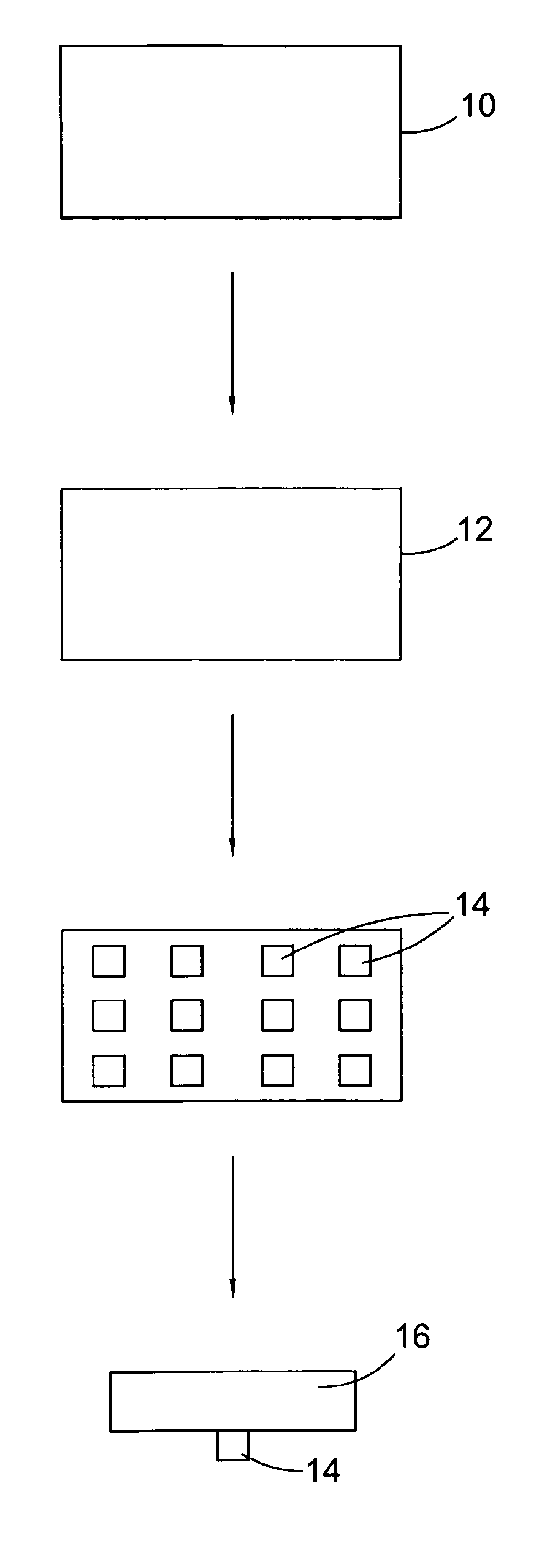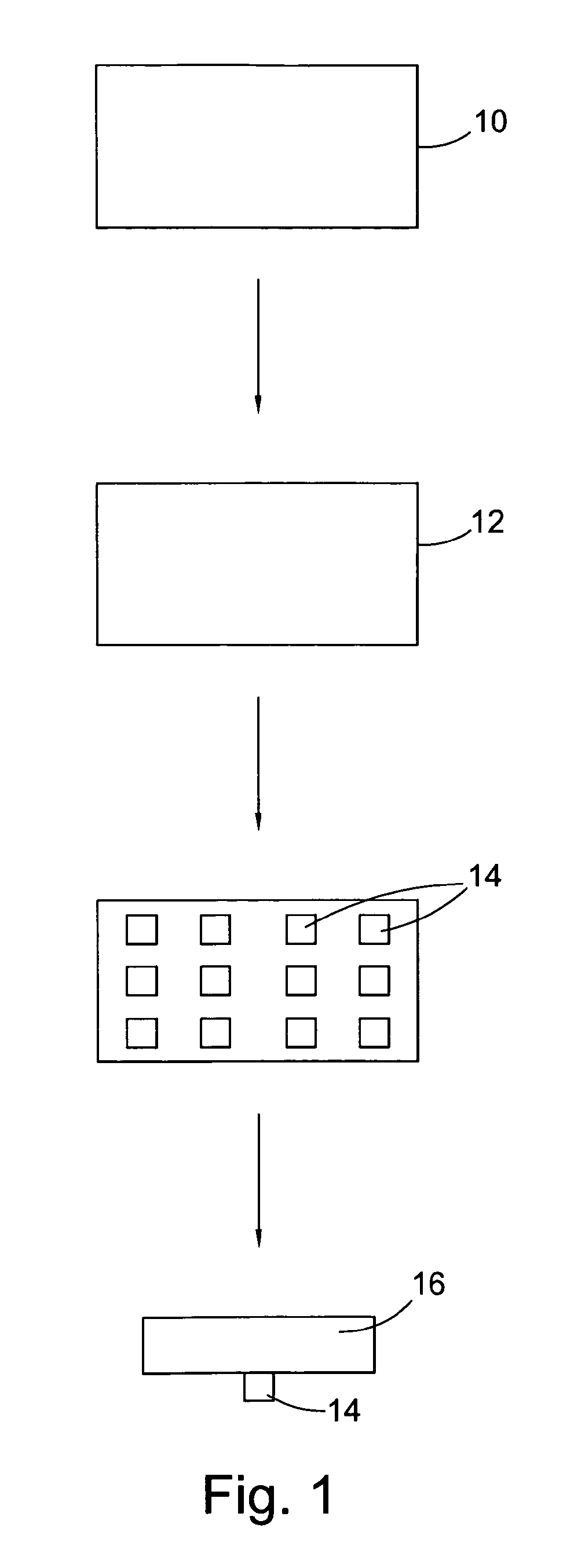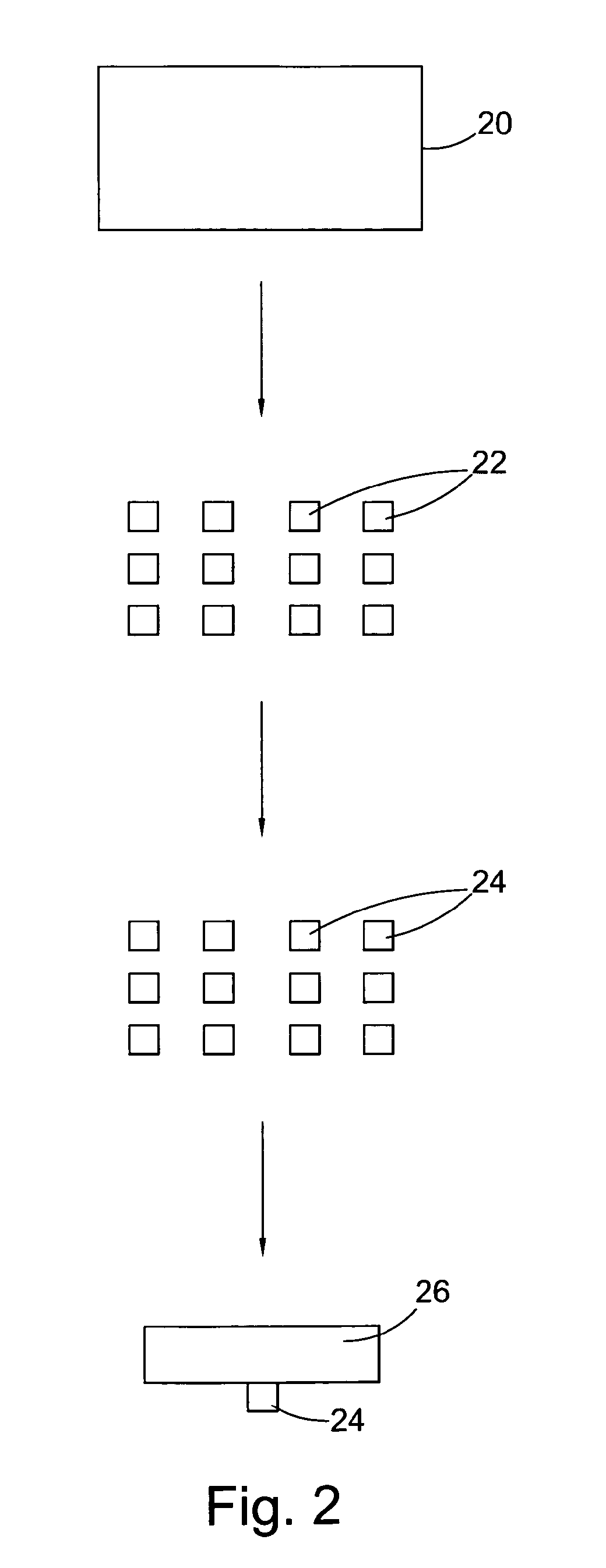Diamond tools
a diamond tool and tool body technology, applied in the field of diamond tools, can solve the problems of reduced cascade damage is too extensive, and the useful life of diamond tool pieces is increased, so as to increase the toughness and/or wear resistance of diamond tools, increase the useful life of diamond tools, and increase the effect of toughness and/or wear resistan
- Summary
- Abstract
- Description
- Claims
- Application Information
AI Technical Summary
Benefits of technology
Problems solved by technology
Method used
Image
Examples
examples
[0064]Several CVD diamond samples have been irradiated with neutrons (typically containing approximately 0.1-0.5 ppm N). Imperial College's Ur235 Consort reactor at Silwood Park, Ascot, UK was used for these treatments (this reactor has now been decommissioned—an alternative can be that found at Delft University, Holland.) The diamond material was typically irradiated for between 14 and 28 hours, with an energy distribution within the reactor which peaked at 1 MeV, 59% of the neutrons falling into the energy range of 0.2-2.2 MeV and 86% of neutrons falling into the energy range 0.2-12 MeV.
[0065]The diamond samples therefore received a dose of approximately 5×1015-1×1016 neutrons / cm2. A colour change was observed from colourless to yellow-green as a result of the neutron irradiation. Using cold UV-Visible spectroscopic measurements (using the same method of calculation as described above) the concentration of isolated neutral vacancies was measured to be in the range of 0.2-0.51 ppm ...
PUM
| Property | Measurement | Unit |
|---|---|---|
| energy | aaaaa | aaaaa |
| energy | aaaaa | aaaaa |
| depth | aaaaa | aaaaa |
Abstract
Description
Claims
Application Information
 Login to View More
Login to View More - R&D
- Intellectual Property
- Life Sciences
- Materials
- Tech Scout
- Unparalleled Data Quality
- Higher Quality Content
- 60% Fewer Hallucinations
Browse by: Latest US Patents, China's latest patents, Technical Efficacy Thesaurus, Application Domain, Technology Topic, Popular Technical Reports.
© 2025 PatSnap. All rights reserved.Legal|Privacy policy|Modern Slavery Act Transparency Statement|Sitemap|About US| Contact US: help@patsnap.com



